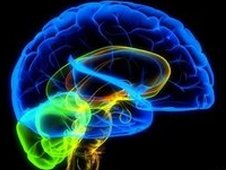Artificial brain in 10 years!
 A functional artificial human brain can be introduced in the next 10 years, scientists say. Henry Markman, lead researcher and director of the Blue Brain Project (Blue Brain Project), has already achieved success in simulating the work of rat brain elements. At the TED Global conference held in Oxford, he suggested that one important application of a synthetic human brain could be finding a cure for mental illness patients, which allegedly suffer 2 billion people around the world with various disabilities.
A functional artificial human brain can be introduced in the next 10 years, scientists say. Henry Markman, lead researcher and director of the Blue Brain Project (Blue Brain Project), has already achieved success in simulating the work of rat brain elements. At the TED Global conference held in Oxford, he suggested that one important application of a synthetic human brain could be finding a cure for mental illness patients, which allegedly suffer 2 billion people around the world with various disabilities.“It’s not impossible to recreate a person’s brain, and we’ll do it in 10 years!” He said. "And if we succeed, wait for a hologram for the conference in 2020".
General construction site
The Blue Brain project was launched in 2005, whose goal is to decipher the mammalian brain algorithms. In particular, the team focused its efforts on exploring new areas of the cerebral cortex (neocortex). “These areas are the new brain,” explains the professor. They appear in mammals to cope with parental functions, new social connections and other functions related to learning everything new. ”

With the evolution from mouse to human, thousands of such areas have grown into one single organ - the brain. “And evolution does not stand still. Our most important organ is growing at an incredible rate. ”
')
Over the past 15 years, Professor Markrama’s group has dismantled the structure of the areas making up the new bark . “It’s like a walk in a rainforest — you need to find out how many trees grow in it, what form they have, how many trees of each type we have and what their position is in the forest itself. But this is more than just a list, because you need to identify and describe the general rules of communication and the connections between them. ”
The project created a computer model of tens of thousands of neurons, each of which is different, which allowed the team to programmatically construct an artificial column of the Mountcastle ( neocortical column ).
Despite the fact that each neuron is unique, the team was able to identify the standard algorithm of the system, which is common in different brains. “Your brain may be larger or smaller and even have a different neuron morphology, however, we all have the same building site on which it is created.” "We also believe that for each species of creatures it is different, and for this reason we can not communicate, for example, with cats."
General view
In order to revive the model, the team sends the algorithms and samples to the supercomputer for processing. “You need one laptop to do all the calculations for one neuron. So we need ten thousand of these laptops. ”
Using such a number of laptops, even if Macs, would be completely inconvenient and expensive, so IBM Blue Gene is a replacement for all of them - a platform that includes 10,000 processors, which allows you to achieve unprecedented power!
Simulations, recreated by this computer, give scientists a clue to the mystery of how our brain works. For example, developers can show a “brain” a picture, say, a flower, and then follow the flow of electrical activity in a computer. “You excite the system, and it actually creates its own pattern of behavior. The ultimate goal is to extract this model and design it to show researchers how exactly the brain perceives the world around it.
 The Blue Brain project, however, has other practical uses beyond advanced neuroscience and philosophy. For example, having collected all the known information about the brain of animals, thus having built Noah's Ark, scientists will be able to recreate the brain of animals. However, the primary goal is man: “We cannot experiment with animals forever,” says Professor Markram.
The Blue Brain project, however, has other practical uses beyond advanced neuroscience and philosophy. For example, having collected all the known information about the brain of animals, thus having built Noah's Ark, scientists will be able to recreate the brain of animals. However, the primary goal is man: “We cannot experiment with animals forever,” says Professor Markram.Moreover, the creation of an artificial brain will give scientists new knowledge about brain diseases. "There are 2 billion people suffering from mental disorders in the world, and this project can help with the development of new drugs."
The TED Global conference takes place from July 21 to July 24 in Oxford, UK.
via bbc.co.uk
PS Unfortunately, there is not enough karma yet to transfer to the “Popular Science”: (I hope you will help me: P
Source: https://habr.com/ru/post/65236/
All Articles